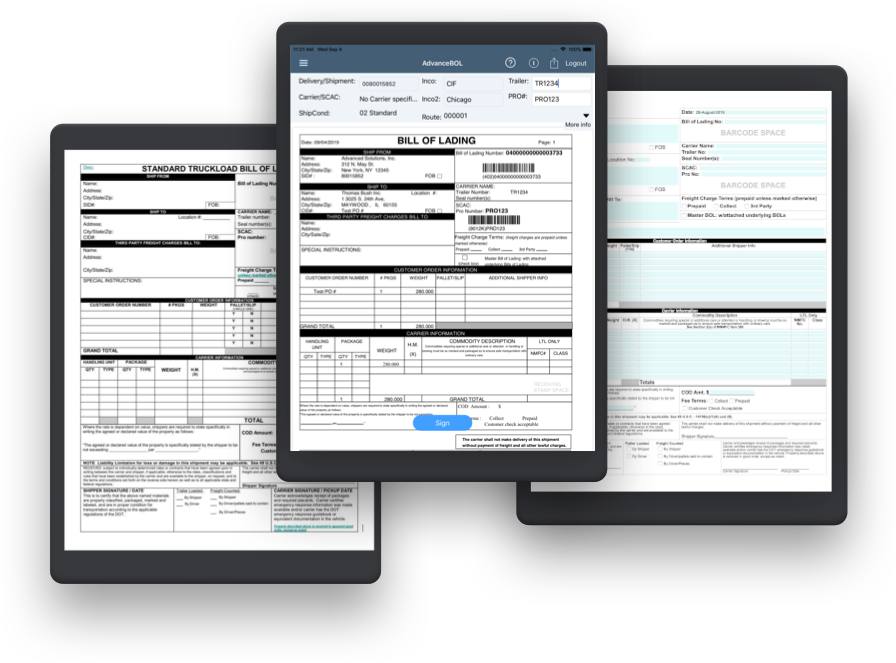Electronic Bill of Lading (eBOL) Guide
Understanding what an Electronic Bill of Lading (eBOL) is—and what it isn’t—is essential to unlocking its full potential as a foundation for digital logistics and supply chain integration.
This guide outlines the defining characteristics of a true eBOL, dispels common misconceptions such as PDFs and scanned documents, and explains how eBOLs enable automation, system interoperability, and real-time visibility across the logistics process.
Note: if you arrived here via a link to eBOL.io and want to access our eBOL services – Contact Us Directly to learn more

What Is an eBOL?
An Electronic Bill of Lading (eBOL) is a structured, machine-readable version of a bill of lading designed for system-to-system communication. Unlike traditional paper or PDF documents, an eBOL is built to be interpreted and processed by software applications.
The concept of the eBOL has its origins in Electronic Data Interchange (EDI). Standards like the EDI 211 (Motor Carrier Bill of Lading) introduced the basic framework for exchanging shipment data electronically. In addition EDI 214 (Transportation Carrier Shipment Status) provided a data structure for stauts updates between supply chain partners.
Modern eBOLs extend this concept by using structured formats such as JSON and API’s to deliver real-time, standardized shipment data that can be consumed by Transportation Management Systems (TMS), Warehouse Management Systems (WMS), and ERP platforms.
"An Electronic Bill of Lading (eBOL) is a structured data entity that uniquely represents a shipment and supports automated, system-to-system logistics workflows."
What Is Not an eBOL
A common misconception is that any digital version of a bill of lading—such as a scanned image or PDF—is equivalent to an eBOL. While these formats are easier to share than paper, they are not structured documents and cannot be automatically processed by logistics systems.
Examples of what is not an eBOL:
-
A PDF copy of a bill of lading, even if signed electronically
-
A scanned or emailed image of a paper bill of lading
-
A document signed through an e-signature platform without structured data
-
A bill of lading generated via a carrier portal with no data integration
These formats may reduce paper handling but lack the automation, integration, and data visibility that define a true eBOL.
"A PDF copy of a Bill of Lading is NOT a eBOL"
It’s also important to clarify that an API is not itself an eBOL. While APIs can be used to transmit eBOL data between systems, the API is simply a transport mechanism. An eBOL must refer to the structured data payload that represents the bill of lading in a machine-readable form.
Carrier portals are another common point of confusion. While generating a bill of lading through a carrier’s online portal may produce a digital document, this process typically involves manually re-entering shipment information. This benefits the carrier, who can convert the data to a structured format, but it does not deliver the operational benefits of a true eBOL for the shipper. In most cases, this approach duplicates effort and creates data silos instead of enabling end-to-end supply chain automation.
How eBOL Powers Modern Logistics
A true eBOL enables automation, traceability, and real-time status updates across the supply chain. Because the data is structured and consistent, it can:
-
Trigger automated check-in/check-out processes at docks and gates
-
Support real-time load visibility for all parties
-
Feed into systems for shipment confirmation, invoicing, and compliance
-
Eliminate manual data entry and reduce the risk of errors
eBOLs also support workflows involving electronic proof of delivery (ePOD), shipment condition documentation, and exception handling—enabling fully digital, touchless logistics.
The Importance of Creating the eBOL at the Source
Key to enabling supply chain automation is capturing and structuring logistics data as early in the process as possible—ideally at the shipper. That’s why our approach emphasizes generating the eBOL at the point of origin, where shipment details are most accurate and complete. This structured data can then be transmitted electronically to all supply chain partners, enabling downstream automation, exception management, and real-time visibility without error prone redundant data entry.
Adoption Tips
Organizations evaluating eBOL solutions should confirm the following:
-
The Bill of lading should have a structured format
-
The solution can interface directly with internal systems (TMS, ERP, etc.)
-
The document includes all necessary data fields for legal, operational, and audit purposes
-
The workflow includes support for electronic signatures and confirmations, where needed
It’s important to distinguish between “digital” and “electronic.”

